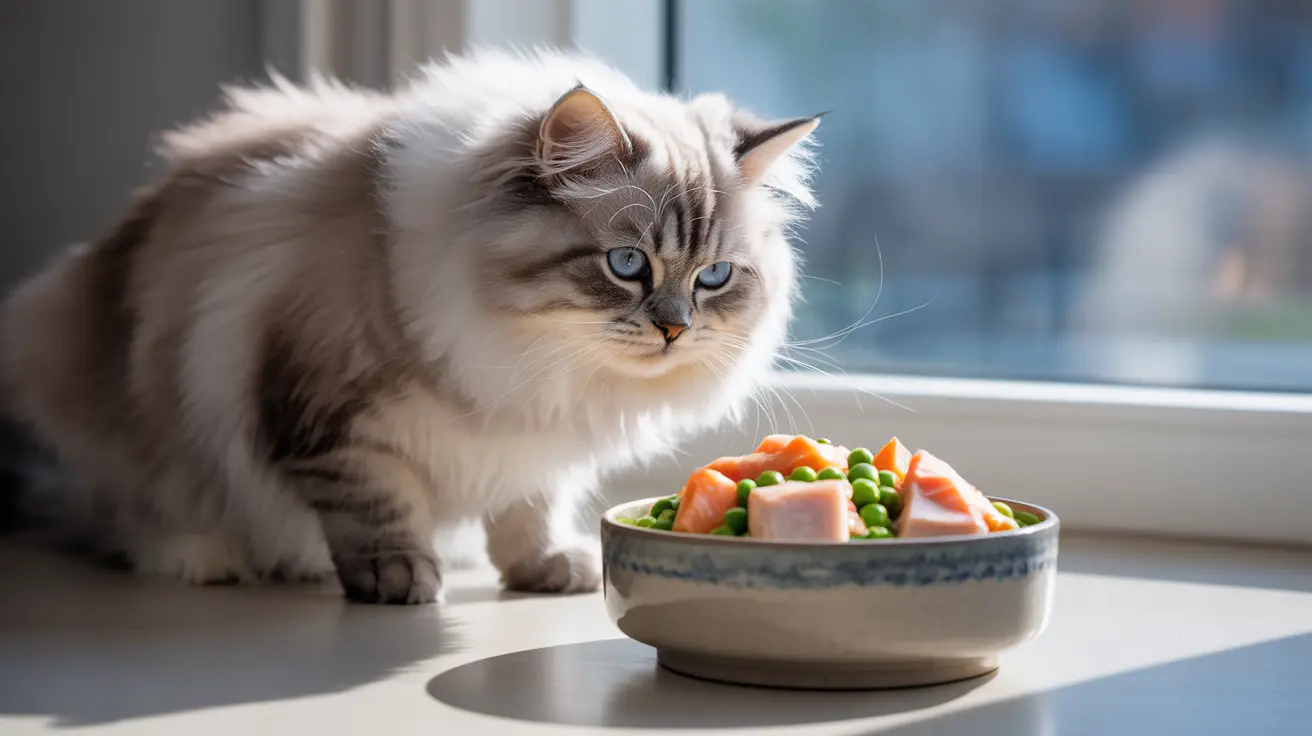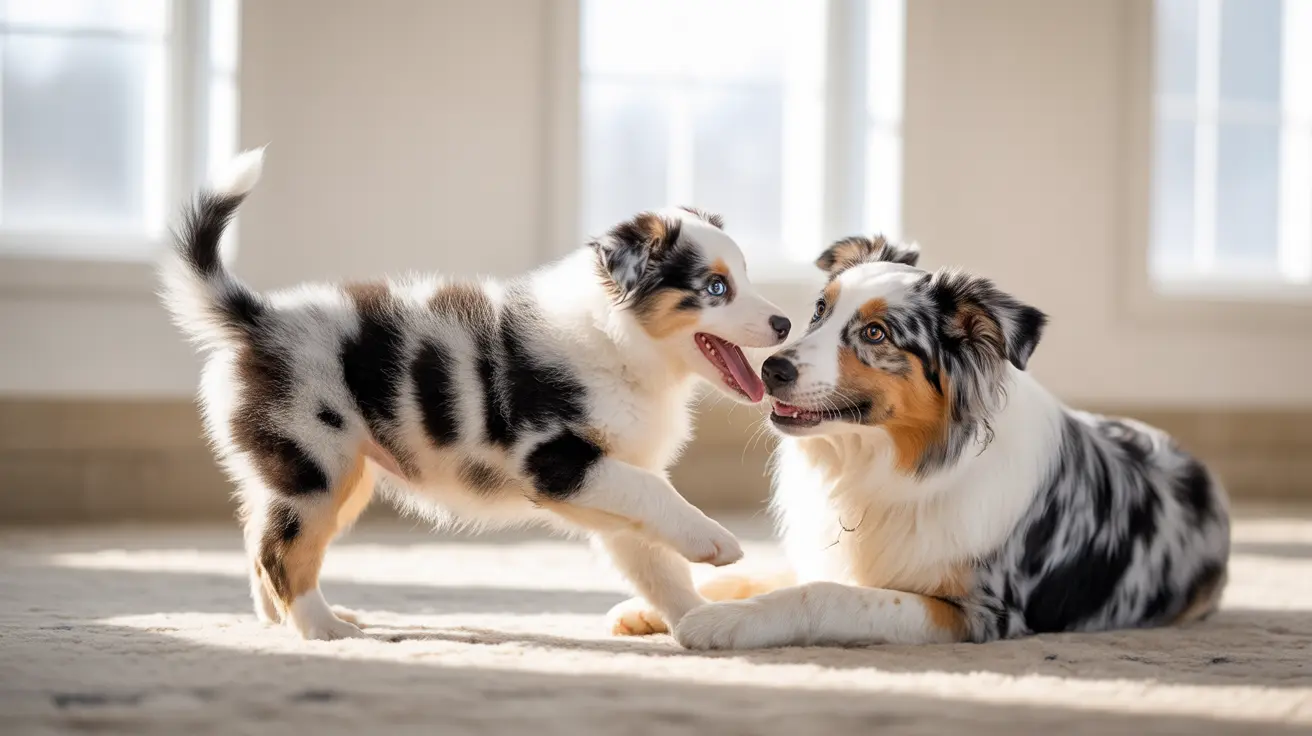The Complete Guide to Healthy Cat Nutrition and Diet: Everything You Need to Know
As a devoted cat owner, providing optimal nutrition for your feline companion is one of the most important responsibilities you'll undertake. Understanding healthy cat nutrition and diet fundamentals can significantly impact your cat's quality of life, longevity, and overall well-being. Unlike dogs or humans, cats have very specific dietary requirements that stem from millions of years of evolution as obligate carnivores.
This comprehensive guide will walk you through everything you need to know about feline nutrition, from understanding your cat's unique biological needs to making informed decisions about commercial foods, raw diets, and feeding strategies. Whether you're a new cat parent or looking to optimize your current feeding approach, mastering the principles of healthy cat nutrition and diet will help you provide the best possible care for your beloved pet.
Understanding Your Cat's Unique Nutritional Biology
Cats are obligate carnivores, which means they rely entirely on nutrients found only in animal products to survive and thrive. This fundamental biological fact shapes every aspect of healthy cat nutrition and diet planning. Unlike omnivores, cats have evolved to require high amounts of protein, moderate fat, and minimal carbohydrates in their daily intake.
The feline digestive system has adapted specifically to process meat-based nutrients efficiently. Cats require essential amino acids like taurine and arginine that they cannot synthesize on their own, making animal protein not just preferred but absolutely necessary for their survival. Additionally, cats need specific vitamins, minerals, and fatty acids that are naturally abundant in prey animals but difficult to obtain from plant-based sources.
Water plays a crucial role in feline health, as cats have a naturally low thirst drive and historically obtained most of their moisture from prey. This evolutionary trait means that hydration must be carefully considered when developing a healthy cat nutrition and diet strategy, particularly when choosing between wet and dry food options.
Essential Nutrients Every Cat Needs
Protein Requirements
High-quality, animal-based protein forms the foundation of any healthy cat nutrition and diet plan. Cats require significantly more protein than most other domestic animals, with their bodies using amino acids not just for muscle maintenance but also for energy production. The protein should come primarily from meat, meat byproducts, or seafood to ensure your cat receives all essential amino acids in the correct proportions.
Water and Hydration
Water is vital for all bodily functions in cats, including kidney health, digestion, and temperature regulation. Cats naturally have a low thirst drive, so incorporating moisture-rich foods into their diet is crucial. Wet food can provide significant hydration benefits, containing at least 75% moisture compared to dry food's 6-10% water content.
Fats and Essential Fatty Acids
Moderate amounts of healthy fats provide concentrated energy and support coat health, brain function, and immune system response. Essential fatty acids that cats cannot produce themselves must be supplied through their diet, making fat quality just as important as quantity in healthy cat nutrition and diet planning.
Commercial Cat Food Options: Weighing Your Choices
Dry Food Benefits and Considerations
Dry cat food contains only 6-10% water and is created through an extrusion process mixing ingredients like meat, poultry, grains, fish meal, fiber, and supplements. While dry food offers convenience and cost-effectiveness for free choice feeding, it may be less palatable and digestible than moist alternatives. When incorporating dry food into your healthy cat nutrition and diet plan, always ensure fresh water is readily available, and store the food in a cool, dry, airtight container while checking expiration dates regularly.
Wet Food Advantages
Canned food contains at least 75% moisture, making it an excellent water source that supports kidney and urinary tract health. This type of food is typically more palatable to cats and comes in numerous varieties to suit different preferences. While more expensive than dry options, wet food can be a valuable component of a healthy cat nutrition and diet strategy, particularly for cats prone to urinary issues or those who don't drink enough water independently.
Semi-Moist Food Characteristics
Semi-moist food contains approximately 35% moisture and primarily consists of meat and meat byproducts with added grains and preservatives. This option falls in the middle range for cost and palatability, though it may dry out after opening, requiring proper storage to maintain nutritional value.
Reading and Understanding Cat Food Labels
When selecting commercial foods for your healthy cat nutrition and diet plan, look for products displaying AAFCO (Association of American Feed Control Officials) approval, which indicates nutritional completeness and balance. The ingredients list should prioritize meat, meat byproducts, or seafood as primary components to ensure adequate animal-source nutrients.
Different formulations cater to various life stages including kitten, adult, pregnancy, and lactation phases, as well as specific health conditions. Some gourmet canned foods may be nutritionally incomplete, so always verify that labels include nutritional adequacy guarantees before incorporating them into your cat's regular feeding routine.
Life Stage Nutrition: Tailoring Diet Throughout Your Cat's Life
Kitten Nutrition Requirements
Kittens require food that's exceptionally high in protein, fats, and calories to support their rapid growth and development. Multiple small meals daily help meet their increased energy demands while supporting proper digestive function. Kitten-specific formulations ensure growing cats receive appropriate nutrient ratios during this critical developmental period.
Adult Cat Dietary Needs
Adult cats benefit from diets tailored to factors like neutering status and weight management needs. Meal feeding is generally preferred over free choice feeding to better manage weight and food intake. A balanced approach to healthy cat nutrition and diet during adulthood helps prevent obesity and supports long-term health.
Senior Cat Considerations
Senior cats may benefit from specially formulated diets designed to support organ function and maintain appropriate body weight as metabolism changes with age. These cats often require closer monitoring of their nutritional status and may need dietary adjustments based on developing health conditions.
Raw Feeding and BARF Diet Considerations
Biologically Appropriate Raw Food (BARF) diets have gained popularity among cat owners seeking more control over their pet's nutrition. Raw feeding can offer benefits like ingredient transparency and potentially reducing food allergies in sensitive cats. However, raw diets carry significant risks including bacterial contamination, disease transmission such as toxoplasmosis, and the challenge of achieving proper nutritional balance.
If considering raw feeding as part of your healthy cat nutrition and diet approach, only use commercially prepared, complete raw foods that meet AAFCO standards, or work closely with a veterinary nutritionist to ensure homemade preparations provide balanced nutrition. Raw meat prepared at home is generally not recommended due to disease risks and the difficulty of achieving proper nutrient ratios.
Managing Weight and Preventing Obesity
Maintaining a healthy weight is crucial for long-term feline health, as obesity is commonly associated with serious conditions like diabetes and arthritis. Proper portion control forms a cornerstone of effective healthy cat nutrition and diet management. Consult your veterinarian to determine your cat's ideal body weight and make appropriate dietary adjustments if needed.
Meal feeding rather than free choice feeding helps control caloric intake and allows for better monitoring of your cat's appetite and eating habits. Any sudden changes in eating behavior or food refusal should prompt immediate veterinary consultation to rule out underlying medical issues.
Treats and Supplementation Guidelines
Treats should comprise no more than 10-15% of your cat's daily caloric intake and are typically not nutritionally complete on their own. When selecting treats for your healthy cat nutrition and diet plan, choose healthy, low-fat options. Safe fruits and vegetables for cats include cucumber, pumpkin, carrots, asparagus, peas, bananas, strawberries, blueberries, melon, watermelon, and deseeded apples.
Supplements are usually unnecessary when feeding a balanced diet and can actually be harmful without veterinary approval. Avoid feeding cats cow's milk due to lactose intolerance, and never offer grapes, raisins, garlic, onions, chives, leeks, shallots, scallions, or moldy food, as these can be toxic to felines.
Creating the Ideal Feeding Environment
Cats can be sensitive to their feeding environment and typically prefer quiet, clean areas away from litter boxes and other animals. Providing a calm, consistent feeding space supports healthy eating habits and reduces stress-related feeding issues. Offering variety in food types and flavors can help prevent finicky eating behaviors while maintaining nutritional balance.
When transitioning between different foods, implement changes gradually over 10-14 days to prevent digestive upset. This slow transition allows your cat's digestive system to adjust while reducing the likelihood of gastrointestinal problems.
When to Consult Your Veterinarian
Regular veterinary consultation is essential for optimizing your healthy cat nutrition and diet strategy. Your veterinarian can help tailor dietary recommendations based on your cat's specific life stage, health status, current body condition, and individual preferences. They can also provide guidance on managing nutrition-related health conditions and recommend appropriate dietary modifications as your cat ages.
If your cat becomes finicky, refuses food, or shows sudden changes in appetite, seek veterinary advice promptly to rule out medical issues that might be affecting eating behavior.
Frequently Asked Questions
- Q: Can cats be healthy on vegetarian or vegan diets?
A: No, cats are obligate carnivores and require nutrients found only in animal products. While some vegetarian or vegan diets exist with synthetic supplements, they're generally unsuitable and should only be considered under strict veterinary supervision with careful monitoring of nutrients like taurine and arginine. - Q: Is wet food or dry food better for my cat?
A: Both have advantages. Wet food provides essential hydration and is typically more palatable, while dry food offers convenience and may support dental health. Many cats thrive on a combination of both, but wet food is generally preferred due to its moisture content and closer alignment with cats' natural dietary needs. - Q: How can I tell if my cat food is nutritionally complete?
A: Look for AAFCO approval statements on the label indicating nutritional completeness and balance. The ingredients list should prioritize meat, meat byproducts, or seafood as primary components. Avoid foods that don't display nutritional adequacy guarantees, especially gourmet or specialty products. - Q: What should I do if my cat suddenly stops eating?
A: Sudden loss of appetite warrants immediate veterinary attention as it can indicate serious health issues. Cats can develop dangerous metabolic complications if they don't eat for even short periods, so prompt professional evaluation is crucial. - Q: Are raw diets safe for cats?
A: Raw diets carry risks including bacterial contamination, disease transmission, and nutritional imbalances. If considering raw feeding, only use commercially prepared, complete raw foods that meet AAFCO standards, or work with a veterinary nutritionist to ensure proper balance and safety. - Q: How much should I feed my cat daily?
A: Feeding amounts depend on your cat's age, weight, activity level, and the specific food's caloric density. Follow manufacturer guidelines as starting points, but consult your veterinarian for personalized recommendations to maintain optimal body weight and prevent obesity. - Q: What human foods are safe for cats as treats?
A: Safe options include small amounts of cucumber, pumpkin, carrots, asparagus, peas, bananas, strawberries, blueberries, melon, watermelon, and deseeded apples. However, treats should never exceed 10-15% of daily calories, and many cats prefer meat-based treats that align better with their carnivorous nature.
Conclusion
Mastering healthy cat nutrition and diet principles is fundamental to ensuring your feline companion enjoys a long, vibrant life. By understanding cats' unique biological needs as obligate carnivores, choosing appropriate commercial foods with AAFCO approval, and tailoring nutrition to your cat's specific life stage and health requirements, you provide the foundation for optimal wellness.
Remember that successful healthy cat nutrition and diet management involves more than just selecting the right food—it requires attention to feeding environment, portion control, proper hydration, and regular veterinary guidance. Whether you choose wet food, dry food, or a combination approach, prioritizing high-quality, meat-based nutrition while avoiding harmful ingredients and maintaining appropriate body weight will serve your cat well throughout their lifetime. Stay observant of your cat's eating habits and appetite changes, and don't hesitate to consult your veterinarian whenever questions arise about optimizing your pet's nutritional health.






